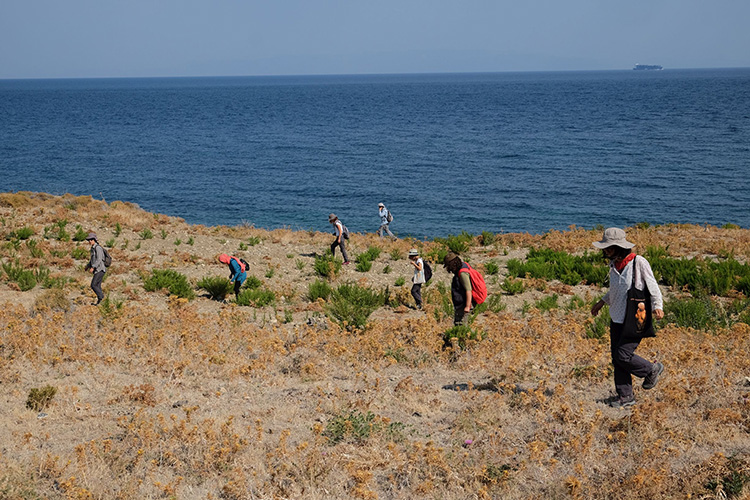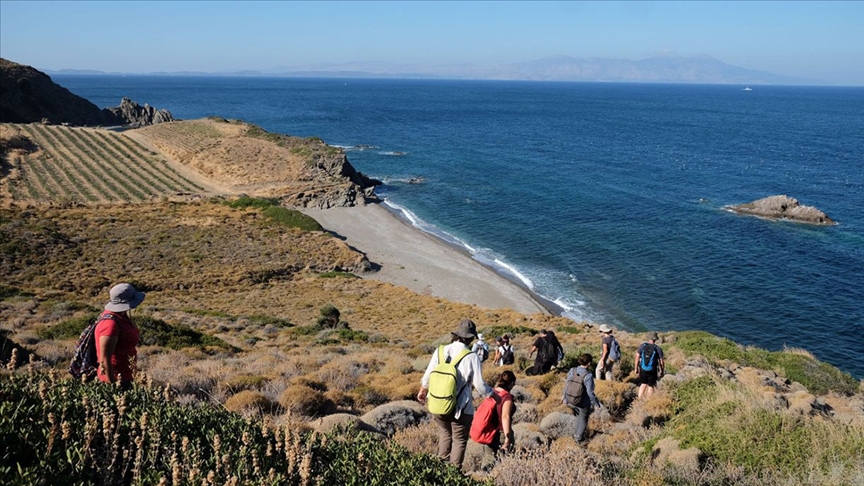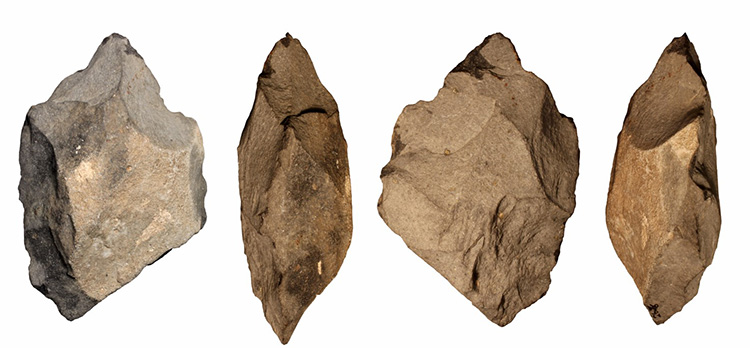
A surface survey in Karaburun has revealed data related to the lives of hunter-gatherer humans from 11,000 years ago
It was announced that archaeological evidence of nomadic, gatherer-hunter groups that lived in the region 11 thousand years ago was found during the surveys carried out in Karaburun district of Izmir.
Surface surveys in Karaburun are being conducted under the leadership of Prof. Dr. Çiler Çilingiroğlu.
According to the statement made by Ege University, historical remains have been documented as a result of extensive surface research conducted in the district of Karaburun using widespread surface research methods.

Çiler Çilingiroğlu, whose views were included in the statement, stated that with the 8-year-long research, records of nearly 200 archaeological and historical sites were established.
📣 Our WhatsApp channel is now LIVE! Stay up-to-date with the latest news and updates, just click here to follow us on WhatsApp and never miss a thing!!
Pointing out that the first systematic study on the history of Karaburun revealed unknown aspects of the prehistory of Izmir, Çilingiroğlu provided the following information:
“The research in the vicinity of Yeni Liman in Karaburun has discovered the oldest known site in Izmir, reaching the first well-preserved lithic tools from the Upper and Middle Paleolithic periods in Izmir and its surroundings. These findings are important for the prehistory of Western Anatolia, pushing the existence of humans in Izmir back 250,000 years.

The research has reached numerous archaeological data about the hunter-gatherer groups that lived in the region during the Ice Age. The studies indicate a microlithic lithic tool industry dating back 12,000 years ago in Karaburun, made of flint. This industry presents similarities with contemporary findings from the Eastern Mediterranean and the Aegean. The Karaburun Archaeological Surface Research has accessed the first archaeological evidence of sedentary and nomadic hunter-gatherer groups that lived in the region 11,000 years ago, illuminating the historical processes before the emergence of agriculture-based lifestyles in Western Anatolia.”
Prof. Dr. Çilingiroğlu stated that all discoveries and findings have been published in international and national academic journals such as “Journal of Field Archaeology,” “Antiquity,” and “Journal of Archaeology,” presenting them to the scientific community.
You may also like
- A 1700-year-old statue of Pan unearthed during the excavations at Polyeuktos in İstanbul
- The granary was found in the ancient city of Sebaste, founded by the first Roman emperor Augustus
- Donalar Kale Kapı Rock Tomb or Donalar Rock Tomb
- Theater emerges as works continue in ancient city of Perinthos
- Urartian King Argishti’s bronze shield revealed the name of an unknown country
- The religious center of Lycia, the ancient city of Letoon
- Who were the Luwians?
- A new study brings a fresh perspective on the Anatolian origin of the Indo-European languages
- Perhaps the oldest thermal treatment center in the world, which has been in continuous use for 2000 years -Basilica Therma Roman Bath or King’s Daughter-
- The largest synagogue of the ancient world, located in the ancient city of Sardis, is being restored











Leave a Reply